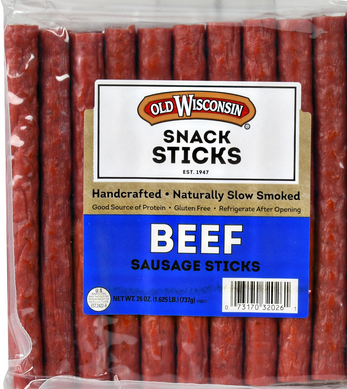
Typically, food is an essential part of humans. It helps us with the appropriate nutrition, energy, joy, and even connection with loved ones. Generally, the link to food is substantial, especially when we are far away from home such as a trip. As a result, whenever you are hiking or backpacking, the bond will be much stronger compared to when at home. On such occasions, it will be necessary to devise effective ways of providing healthy, lightweight food full of flavour. Therefore, learning about backpacking food ideas is critical.
An effective plan for having the correct snacks for backpacking directly impacts your energy level and the ability to enjoy the whole activity. Without appropriate planning, going for a hike can cause a lot of discomforts. While hiking, food is usually a great luxury and will take your mind off any negatives. You will need to dehydrate food when hiking to avoid situations where it may go bad. This article is helpful for you to have the correct nutrition, suitable recipes, and appropriate hiking snack.
Checklist Of 23 Backpacking Food and Snack Ideas:
When hiking, more so on a strenuous and hilly terrain, it is necessary to rely on energy-dense foods. They offer more energy, and your hiking will be full of fun. Additionally, it is essential to travel light whenever you are going for a backpack. As a result, it is necessary to carry food with less weight. The food for a backpack should have a certain number of macros, protein, fat, and carbs. The backpacking food requirements should be in the following form.

Lightweight – the food should have little water content since it will add to the food and packaging weight. As a result, it is always advisable to repackage the food into suitable boxes that are light. Heavy packs can reduce your pace during a hike.
Ready to eat food – since you will be hiking in the daytime hence no cooking time, it is necessary to carry along ready-made food. The snacks and food should be simple to allow continuous moving. The majority of backpackers have no cooking time. Therefore, it is necessary to be ready.
Nutritious food – when hiking, you will always burn a lot of calories per day. As a result, it is advisable to take in many macronutrients to cover the high level of calory burn rate. It is, therefore, essential to eat carbohydrates, high-calorie levels, fats, proteins, and electrolytes. By doing this, you will remain healthy and full of energy during the entire hiking period.
Long shelf life – the food you carry should have a stable shelf life. This refers to the duration that the food will remain edible and still retains its flavour and nutrients. The best way to address this is by carrying a freeze-dried diet since they will stay for a suitable duration.
Packable food – since space is a tight issue when backpacking, it is essential to consider easily packable food.
Backpacking Snacks Ideas
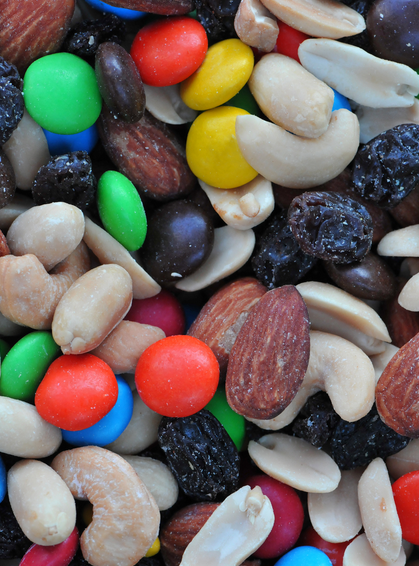
1. Energy Chews
These are food that is gummy bear-like consistency. They have different types of nutrients. Usually, some have electrolyte content, which many will fancy.
2. Energy Gels
Just like energy chews, gels have numerous options, and they may be endless. Generally, snack backpack idea is suitable for appropriate energy boosting. As a result, it is reliable in case you want to get calories quickly.
3. Fruit Leather
It is usually a suitable source of natural sugar, and it has a taste like that of candy. This backpack snack idea is thick and can be chewed just like candy. Therefore, it is sweet and is preferred by many hikers.
4. Pork Rinds
It is essential to understand that the best thing about this snack is its texture. Typically, they are crunchy and crisp, contrary to most mealy and dense backpacking foods. They are nutritious in value as they have a high level of proteins.
5. Seaweed
They are dark greens that are ready to eat. It is a superfood that is easy to eat and carry around while on a hike. Whenever you are backpacking, it is necessary to try it out. Additionally, it is reaching in nutrients.
6. Peanut Butter
This is one of the significant backpacking snack ideas. It is rich in calories, fat, sodium, and a lot of proteins. Typically, it is ready-to-eaten and can be complementary to other food ideas.
7. Honey
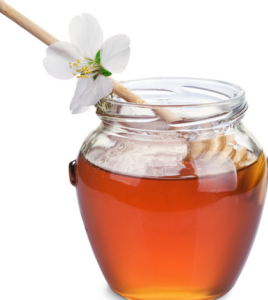
Mostly, honey is appropriate for backpack food since it will sweeten your meals. On top of this, you can always take it straight. Honey is also healthy as it can protect you from certain conditions. As a result of its sugary content, it can add a lot of energy.
8. Hummus
This is a backpacking superfood that is usually taken as a snack. It is reliable as it can be lathered on any food type. It has yummy taste-making many hikers like it. On top of this, it reaches in calories, fibre, carbs, and protein.
9. Granola Bar
There are numerous options for this type of snack. It may be in protein bars, energy bars, snack bars, and even snack ones. It is ready to eat and has typically high nutrition value. When using it, it should be kept natural and processed minimally.
Backpacking Food/Meal Ideas
10. Beef Jerky and Dried Meat
To many backpackers, these are some of the favourite meats that are non-cooked. They are appropriate since they do not need to be refrigerated. Additionally, they are tasty and have a suitable level of protein and sodium. They will help you when in need of ready-made lunch.
11. Tuna and Salmon
This meat choice usually is popular amongst many hikers. Its packaging is generally convenient and can be easily carried within a tight space. You can easily find it anywhere at a cost-effective amount. For more calories, you should get it in olive oil.
12. Cheese
For some backpackers, this can be heavy food. However, it is required since it provides a lot of calories and fat. It will also enhance your meet flavour. When buying it, you should look for shelf-stable ones.
13. Tortillas
Typically, bread is usually bulky and fluffy for backpacking. However, tortillas are effective since they are compact and can be easily squeezed. They can also be complemented using peanut butter, cheese, and hummus, making your food tastier.
14. Greenbelly Meals
They are usually ready-to-eat meals and are ultralight. The greenbelly meals are loaded with enough calories, protein, fats, and fibre. In addition to this, they also have sodium and carbs. It is a good hiking lunch idea as it brings in natural ingredients.
15. Bagels And Muffins
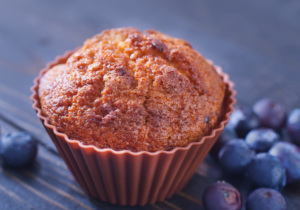
They are effective in providing the fluffy texture of the bread. Bagels are appropriate for backpacking since they are easily packable and are not delicate. Muffins are fantastic, as they also are dense in calories for hiking.
16. Crackers
have a high content of carbohydrates and sodium. If you suspect that they can be crushed inside a bag, you should hang them out.
17. Instant Noodles
Noodles are sometimes better than pasta. Dealing with seasoned noodles will save you from carrying out a lot of clean-up after that. They are effective because of the high carbohydrate level.
18. Instant Rice
If you need a backpacking dinner meal, then this is the correct choice. They are of different varieties and have other seasonings. You will be able to prepare it quickly. It also has carbohydrates.
19. Couscous
Cooking it will approximately take five minutes. As a result, it is far much faster when compared to noodles or rice. It has a nice texture which is a relief for dinner. It is reached in fibre content.
20. Dried Veggies
Eating healthy food when on a trail is an uphill task. However, backpacking dried vegetables are usually an exception. When added to other meals, you will enjoy excellent food reach in nutrients.
21. Lentils
Lentils are legumes and have high calories, iron, and fibre. When preparing it for supper while on a trail, it will take a few minutes to cook. Because of its nutrients, it is a portion of healthy food to carry for backpacking.
22. Freeze Dried Meals
When preparing it, you will add hot water, stir then seal for some minutes. You can always select it from more than one option, which are of different flavours.
23. Powdered Milk
This is usually milk without weight. It has excellent levels of protein, potassium. Additionally, it is rich in fat and can boost your calories while backpacking. To enjoy, you should mix it up with dried fruit and granola. Therefore, it is suitable for your breakfast and makes your meals creamy.
“Dehydrate Recipes” DIY for Backpacking
Dehydrated Risotto with Vegetables

One of the all-time backpacking recipes is creamy risotto rice. Risotto is usually a comfort food that is quite filling. When dehydrated, it is the best since it is lightweight backpacking and has the right ingredients.
When dehydrating it at home, you can add some vegetables to it. In this recipe, you should use zucchini, mushrooms, and peas. They make it more nutritious.
When making risotto, it is essential to use as little fat as possible, about one tablespoon. This is to prevent the food from going rancid.
After that, saute the onion in your until it turns soft and a bit golden. Put your rice in the pot and effectively stir to allow oil coating. Once the rice tips grains become translucent, put wine and mix for absorption of wine.
You will then add broth, a half cup at a time and adding more slowly. Upon the rice becoming tender, get it off the heat, carry out salt seasoning and cool. After that, spread the rice on the dehydrator tray. There are different tray types to use.
You can sometimes flip the spread rice depending on the type of tray being used to improve drying.
You will then slice your vegetables and add them onto the dehydrator trays carefully, not to overlap any piece. The drying process should take at least 4-8 hours at a temperature of 135F. Once the rice has become brittle and can easily break in between your fingers, then it is ready.
The vegetables will be prepared when they reached a point where they are scorched and do not have any bends.
Packing for the Trail
It is necessary to pack the entire dehydrated ingredients and have some cheese and olive oil containers. this is to add some calories.
Once you are in your camp for the backpacking, it is necessary to have all the appropriate equipment for rehydrating such meals. This process will require you to place the dehydrated food in a cookpot and add two tablespoons of cheese. Put adequate water enough to cover, appropriately, two cups. You can soak the food for some time to reduce the time for cooking.
After that, boil the food and simmer while stirring. This should continue until the risotto, and the veggies become tender.
What to Bring to Make, Cook, and Eat Snacks/Meals
Whenever you are going for a hike or backcountry trips, it is necessary to be well prepared. Once you have packed all the relevant food types, it is needed to prepare and plan how you are going to make, cook, and eat them. As a result, there are some particular items that you should never forget to pack.
An appropriate backpacking kitchen should include a stove system.
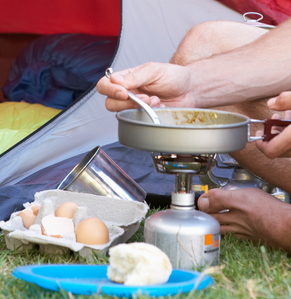
This is necessary for boiling and rehydrating the backpack meals. It is supposed to be light for convenience when carrying. Additionally, it is relevant to bring a cookpot. This can be one or two, depending on the number of people.
In some cases, you can carry a group cookpot that is larger but still convenient. It would be best if you also had spoons relating to the number of people. Finally, you are supposed to carry a cup and food storage equipment. With these, it is easy to prepare and eat your meals.
Reasons to bring Dense Filled Foods for a Hike and Effectiveness of Dehydrate Meals for a Backpack:
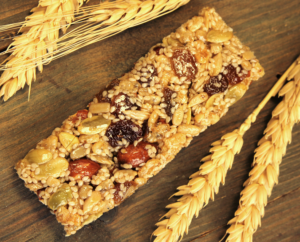
At any point in time that you will be backpacking and hiking, it is necessary to have a densely filled meal plan. This is because the activity will require the use of more energy that will burn your calories.
As a result, it is necessary to pack densely filled foods that will replenish the burnt calories hence balance them out. At the same time, you will need a lot of energy. Therefore, it is appropriate to consider foods that are rich in relevant nutrients.
When you have equipped your backpack with dried staples, veggies, meats, and herbs, then you will be ready for your hike. This is because you will have all the essential backpack meals to help you during your walk. Despite going for a long-distance hike or a weekend backpacking, you are supposed to be conscious about the weight to carry.
However, being ultralight does not mean carrying only energy gels and protein bars. Taking such light food is essential and convenient for your trip. Despite this, with an appropriate plan and preparation, it will be easy to have tasty and nutritious foods light in weight. Such foods will also have high calories, which are easy to prepare.
To enjoy your backpacking, it is necessary to select meals that are easier to prepare and cook, require little or no clean-up at all. Such food should also cram calories in every ounce of weight. There are usually specific ways to prepare lightweight backpack meals. This is generally through dehydrating.
Generally, bringing dehydrated food during your backpacking is effective in several ways. Since you will need lightweight, dehydrating will reduce the volume of food by a significant percentage of the original weight. As a result, they will be optimal for backpacking.
Additionally, such food is not creepy since you are aware of the specific ingredients you prefer. Undertaking this activity at home is also easy, and the entire process will not take your time. In most cases, dehydration does not affect the nutrients of food to a much extent.
In general, most people continually grapple with the quantity and type of food to bring during a backpacking trip. As explained above, there are a lot of factors that should always be taken into consideration. Such factors may be hiking intensity, body size and weight, and the rate of calories burning.
Additionally, it also covers the number of days you will spend on such a trip. When burning more calories, it is necessary to it more food that will balance the burnout.
It has been shown that for your hiking to be fun and easy, it is necessary to pack lightweight food. As a result, you will need a proper backpacking food and snack meal plan. Usually, you can purchase these suggested food types from various stores.
However, it is advantageous to undertake a food dehydrating process at home. Eating DIY food during such hikes will be cost-effective and contain customized ingredients. Therefore, appropriate planning is crucial whenever you are preparing for any hike.







